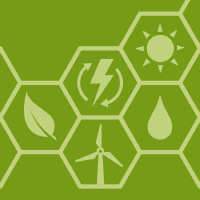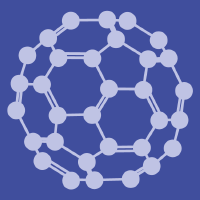Topic Editors
Nanomaterials for Energy and Environmental Applications, 2nd Edition
Topic Information
Dear Colleagues,
This Topic is a continuation of the previous successful Topic “Nanomaterials for Energy and Environmental Applications (https://www.mdpi.com/topics/O360KW50O1)”. Due to the magic size effect, materials with nanoscale dimensions or structures are advantageous in offering huge surface-to-volume ratios, favourable transport properties, altered physical properties, and confinement effects. Functional nanomaterials have been extensively studied for energy-related applications such as solar cells, catalysts, and electrochemical energy storage systems. Nanostructured materials benefit these applications by (1) providing a large surface area to boost the electrochemical reaction at the heterophase interface, (2) generating optical effects to improve optical absorption in solar cells, and (3) giving rise to a porous structure to facilitate the electron or ion transport and electrolyte diffusion, so as to ensure a high-efficiency electrochemical process. I invite you to submit manuscripts on topics including (but not limited to) the following:
- Nanomaterials for the future hydrogen economy (any aspect);
- Nanomaterials for renewable energy production and efficient storage;
- Nanomaterials for electrochemical energy conversion and storage systems;
- Nanomaterials for sustainable energy and environmental protection;
- Nanomaterials for a sustainable environment;
- Nanomaterials for water and wastewater treatment;
- Nanomaterials for future highly efficient solar cells and solar energy conversion;
- Technology for the synthesis of functional nanomaterials;
- New mechanisms relying on nanostructures;
- Understanding of the relationship between the device performance and the nanomaterial structure.
Prof. Dr. Robert A. Varin
Dr. Tao Chen
Topic Editors
Keywords
- nanomaterials
- energy
- nanomanufacturing
- electrochemical
- carbon neutral
- wastewater
Participating Journals
| Journal Name | Impact Factor | CiteScore | Launched Year | First Decision (median) | APC | |
|---|---|---|---|---|---|---|

Applied Sciences
|
2.5 | 5.5 | 2011 | 19.8 Days | CHF 2400 | Submit |

Energies
|
3.2 | 7.3 | 2008 | 16.2 Days | CHF 2600 | Submit |

Materials
|
3.2 | 6.4 | 2008 | 15.2 Days | CHF 2600 | Submit |

Nanoenergy Advances
|
- | 9.0 | 2021 | 33.9 Days | CHF 1000 | Submit |

Nanomaterials
|
4.3 | 9.2 | 2010 | 15.4 Days | CHF 2400 | Submit |

Preprints.org is a multidisciplinary platform offering a preprint service designed to facilitate the early sharing of your research. It supports and empowers your research journey from the very beginning.
MDPI Topics is collaborating with Preprints.org and has established a direct connection between MDPI journals and the platform. Authors are encouraged to take advantage of this opportunity by posting their preprints at Preprints.org prior to publication:
- Share your research immediately: disseminate your ideas prior to publication and establish priority for your work.
- Safeguard your intellectual contribution: Protect your ideas with a time-stamped preprint that serves as proof of your research timeline.
- Boost visibility and impact: Increase the reach and influence of your research by making it accessible to a global audience.
- Gain early feedback: Receive valuable input and insights from peers before submitting to a journal.
- Ensure broad indexing: Web of Science (Preprint Citation Index), Google Scholar, Crossref, SHARE, PrePubMed, Scilit and Europe PMC.
Related Topic
- Nanomaterials for Energy and Environmental Applications (17 articles)



